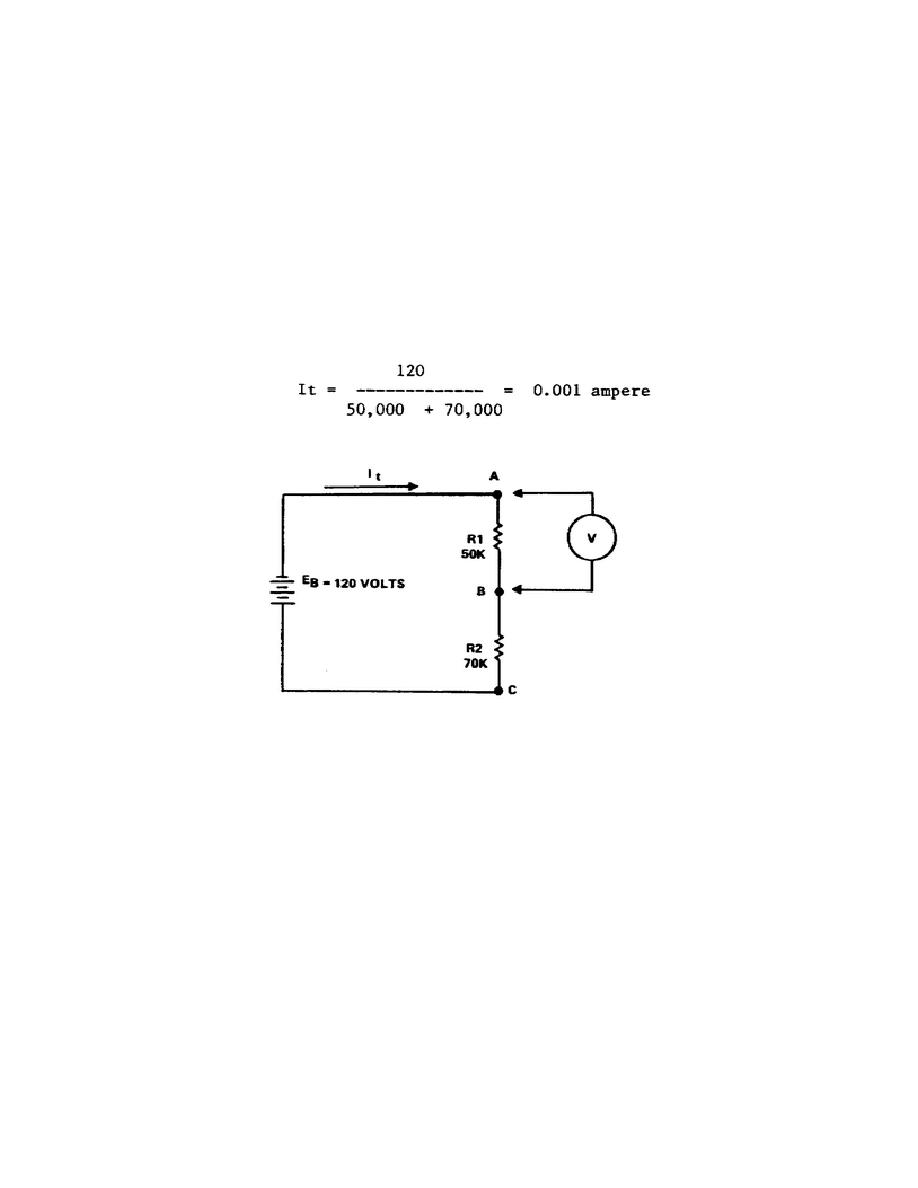
e. To extend the range of a voltmeter, add a series resistor (multiplier).
Normally this requires you to calculate the resistance of the multiplier. Then you
merely add the required resistance in series so that the total resistance of the
meter is satisfactory for the new range. You may wonder why you need to know how
to increase the range of a voltmeter. In some cases you are required to measure
extremely high voltages with a meter that does not have the required range.
By
determining the multiplier resistance and adding this resistance in series with the
meter movement, you can measure these voltages.
f. As we have stated, the voltage indicated by the meter is somewhat in
error, depending on the meter sensitivity. This error is due to the loading effect
which the meter has on the circuit in which the voltage is being measured.
To
understand just how a meter affects (or loads) a circuit, observe the circuit shown
in Figure 1-16.
According to the values indicated, the total current in the
circuit is 0.001 ampere.
Figure 1-16.
Leading effect
g. The applied voltage divides across the two resistors--50 volts across R1
and 70 volts across R2.
h. When you connect a voltmeter across (from point A to point B) the resistor
R1, you naturally expect the meter to read 50 volts. However, depending upon the
sensitivity of the meter, it may indicate less than the 50 volts you expect. For
example, suppose you are using a voltmeter with a sensitivity rating of 1000 ohms x
100, or 100,000 ohms.
To find the resistance of a voltmeter, multiply the
sensitivity rating by the full-scale voltage.
17


 Previous Page
Previous Page
